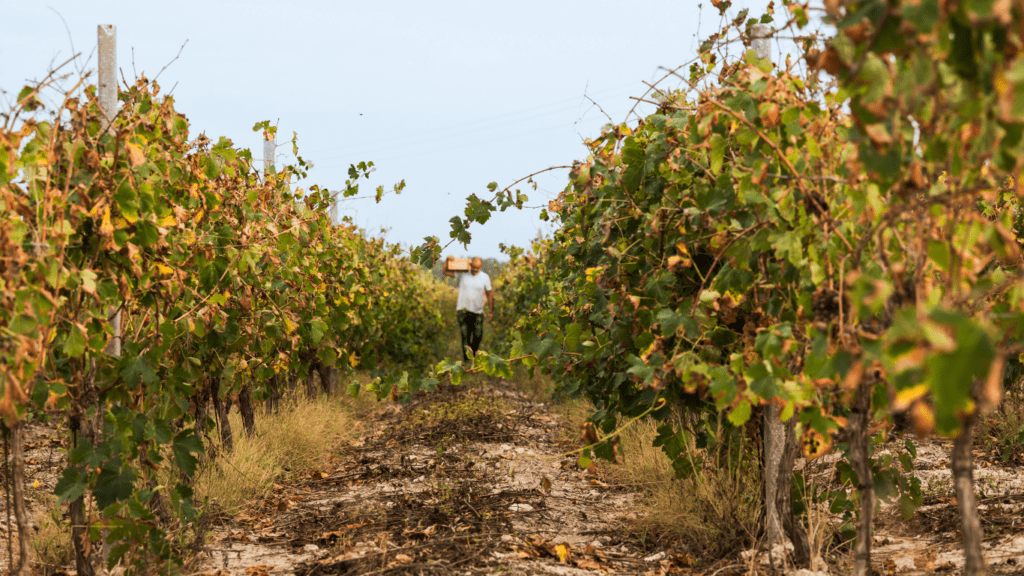Understanding the New Climate Reality
Weather extremes aren’t outliers anymore they’re the new normal. Seasons are more unpredictable, and the shifts are hitting agriculture where it hurts. Floods are drowning fields that used to stay dry. Droughts are dragging on longer, forcing farmers to stretch water supplies or face crop failure. Heatwaves are arriving early and lingering late. Even early frosts are catching growers off guard, cutting into late harvests and stunting growth.
Farmers are now managing back to back extremes, sometimes in the same year. These weather swings create both short term headaches like lost yields, sick livestock, or delayed planting and long term stress on soil health, water access, and planning cycles.
What used to be ‘once in a decade’ is now happening nearly every season. Staying in the game requires understanding these patterns, tracking local impacts, and preparing for more of the same only harder to predict. For a detailed look at how these events are reshaping farming, check out Extreme weather effects on agriculture.
Building Weather Resilient Farming Systems
When the weather turns unpredictable, farming systems need to absorb the hit and bounce back. Crop diversification is the first line of defense. By planting a mix of species grains, legumes, tubers, and more farmers don’t gamble everything on a single outcome. If heat wipes out one crop, another might power through. It spreads the risk.
Next up: smart crop choices. Farmers are shifting to varieties that can survive droughts or floods, depending on what they’re up against. These aren’t magic seeds, but they can buy valuable time and reduce total losses. Pair that with smarter water use and the picture gets stronger. Drip irrigation delivers moisture straight to the roots with minimal waste. Sensors keep track of soil moisture so you water only when needed. Rainwater harvesting systems capture what the skies give no need to overdraw from wells during a dry spell.
But none of that works long term if the soil’s broken. Healthy soil acts like a sponge, soaking up excess rain and holding onto moisture during dry spells. Restoring organic matter, reducing tillage, and using cover crops all help rebuild this foundation. When the climate’s throwing punches, resilient farmers don’t just react they build systems tough enough to take the hit.
Farm Level Risk Management Tactics
There’s no sugarcoating it weather is more unpredictable and severe, and farms need to be ready for just about anything. That starts with an emergency response plan. Whether it’s a flood, wildfire, or a surprise frost, having a clear checklist of what to secure, where to move animals, and how to protect critical assets can save time, money, and lives. Don’t overcomplicate it. Think in scenarios and draft simple plans you and your crew can act on fast.
Next up: insurance and support. Know your policies what weather events are actually covered and how to file a claim quickly. Too many farmers find out too late that their coverage doesn’t match their risks. Same goes for government programs research ahead, ask questions, and get on the radar of local ag service offices before disaster hits. Having paperwork ready and relationships built makes the difference.
For livestock operations, rotational grazing isn’t just about soil health anymore it’s also a resilience strategy. If one section floods or burns, another paddock may still be viable. Make sure shelter options are spaced out and easily accessible. You want the ability to move herds fast if needed.
Lastly, routine infrastructure checks shouldn’t be an afterthought. Barns, greenhouses, irrigation lines, and drainage systems need regular walk throughs, especially before seasonal transitions. A cracked roof or clogged drain in normal times is just a hassle but during a storm, it can shut you down.
The key? Layer your defenses. No single fix will protect your farm, but doing the basics well and doing them ahead of time can keep a bad day from becoming a disaster.
Leveraging Technology and Data

Farming today isn’t just about soil and sun it’s also about satellites and software. With unpredictable weather becoming the norm, real time weather data has turned from a nice to have into a necessity. Reliable forecasts help farmers make fast decisions: when to plant, when to irrigate, when to harvest early. Even a 24 hour heads up on an incoming heatwave or torrential storm can save thousands in avoided losses.
Tech is stepping up. Apps are offering hyperlocal forecasts, soil moisture alerts, and growing degree day tracking. Drones equipped with thermal and multispectral sensors give an up close picture of crop health that a tractor seat just can’t. Satellite imagery, once pricey and slow, is now faster and more accessible, allowing farmers to spot issues like pest clusters, nutrient deficiencies, or drainage problems before they start dragging down yield.
Plenty of farms are seeing returns from going data driven. A wheat farm in Kansas cut fertilizer use by 18% last season after switching to drone assisted soil testing. An apple orchard in Washington uses mobile weather stations to automate frost protection, slashing water use without risking the crop. These aren’t future tools they’re already reshaping the present.
Whether it’s watching the skies or scanning the fields, farmers who lean into tech have more control in a world that’s offering less of it. It won’t stop the storms, but it does sharpen the edge of preparation.
Community and Knowledge Sharing
Weather doesn’t care about fence lines. When disaster hits, it often hits everyone in the area. That’s why farmers who team up sharing equipment, swapping ideas, and checking in regularly tend to recover faster and adapt better. Whether it’s borrowing a grain dryer during a cold snap or teaming up to buy bulk seed that performs better in heavy rain, collaboration pays off.
One step up from informal cooperation is joining (or starting) a climate focused farming cooperative. These groups allow farmers to pool resources, try out shared resilience strategies, and even access funding or training that may not be available to solo operations. They’re also a great way to stay informed quickly particularly during fast changing weather or policy updates.
If you’re flying solo, at least get connected to reliable sources. NOAA’s Climate Prediction Center, local ag extension services, and farmer led forums like AgTalk are must haves. Keep a few trusted climate newsletters in your inbox, and carve out 10 minutes a week to scan for new threats or solutions.
For specific insight into how extreme weather is reshaping agriculture, check out Extreme weather effects on agriculture.
Forward Planning for Long Term Sustainability
Farming through climate extremes isn’t just about riding out the next storm it’s about making the whole operation more stable over time. Renewable energy is rising fast as a practical move. Solar panels, wind turbines, and even biogas systems can lower long term energy costs and keep key systems running during grid outages. It’s not just eco friendly it’s risk management.
Then there’s land design. More farmers are carving out buffer zones like tree lines and riparian strips to help manage water flows, reduce erosion, and trap runoff. Pairing this with natural water harvesting systems can make a big difference during both floods and droughts. The land works better when it’s working with nature, not against it.
Regenerative agriculture pulls it all together. Practices like cover cropping, minimal tillage, composting, and rotational grazing aren’t just buzzwords. They build soil that handles weather extremes better, holds more water, and supports resilient plant growth. Over time, healthier soil means fewer shocks and more recovery when the sky turns against you. This isn’t just a strategy it’s a shift in how we think about farming in the long run.
Staying Grounded and Adaptive
When weather gets unpredictable and losses stack up, the first thing to slip isn’t always the crops it’s the mindset. Farming requires grit, but it also requires care. More and more producers are starting to treat mental health like the core risk factor it is. Talking to neighbors, checking in with co ops, seeking out rural support groups these aren’t luxuries. They’re tools of the trade.
Adaptation isn’t just about what seeds you plant or what tech you buy. It’s also in how you structure your year. Flexibility in planning is crucial. That might mean staggering planting dates or setting up backup suppliers. For some, it means running models that account for losses early, not as an afterthought. The difference between a hard year and a collapse often comes down to what was built into the plan.
At the root of it, the shift is mental: trade perfection for preparation. Expect change. Adjust fast. Keep moving. That’s how farms stay standing when the weather doesn’t care about forecasts.



